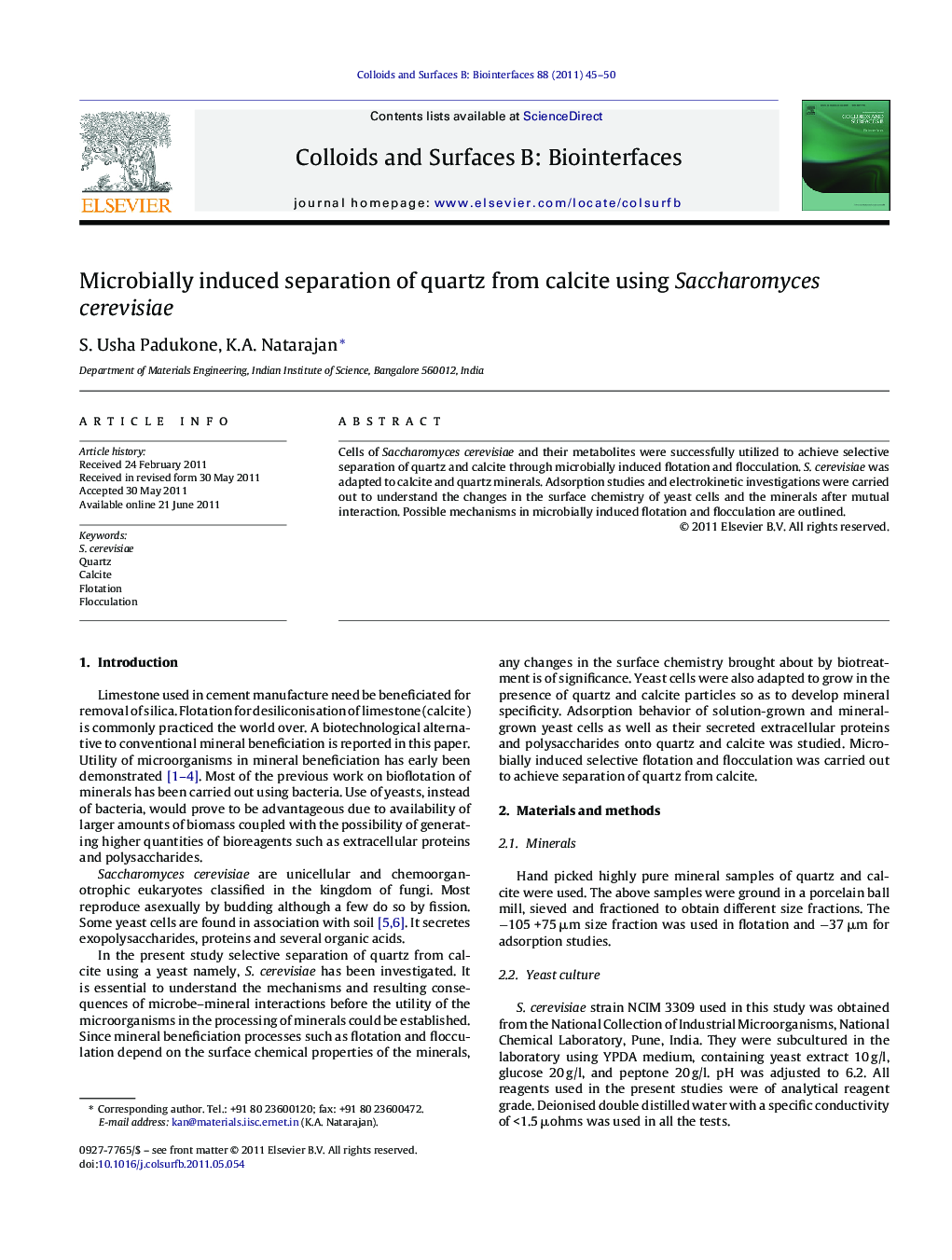| Article ID | Journal | Published Year | Pages | File Type |
|---|---|---|---|---|
| 601021 | Colloids and Surfaces B: Biointerfaces | 2011 | 6 Pages |
Cells of Saccharomyces cerevisiae and their metabolites were successfully utilized to achieve selective separation of quartz and calcite through microbially induced flotation and flocculation. S. cerevisiae was adapted to calcite and quartz minerals. Adsorption studies and electrokinetic investigations were carried out to understand the changes in the surface chemistry of yeast cells and the minerals after mutual interaction. Possible mechanisms in microbially induced flotation and flocculation are outlined.
Graphical abstractScanning electron micrographs illustrating yeast cell attachment on (a) calcite and (b) quartz.Figure optionsDownload full-size imageDownload as PowerPoint slideHighlights► Yeast-mediated separation of quartz from calcite discussed. ► Saccharomyces cerevisiae exhibited higher affinity to calcite. ► Calcite rendered hydrophilic and quartz hydrophobic. ► Microbially induced flotation and flocculation for removal of quartz from calcite.
